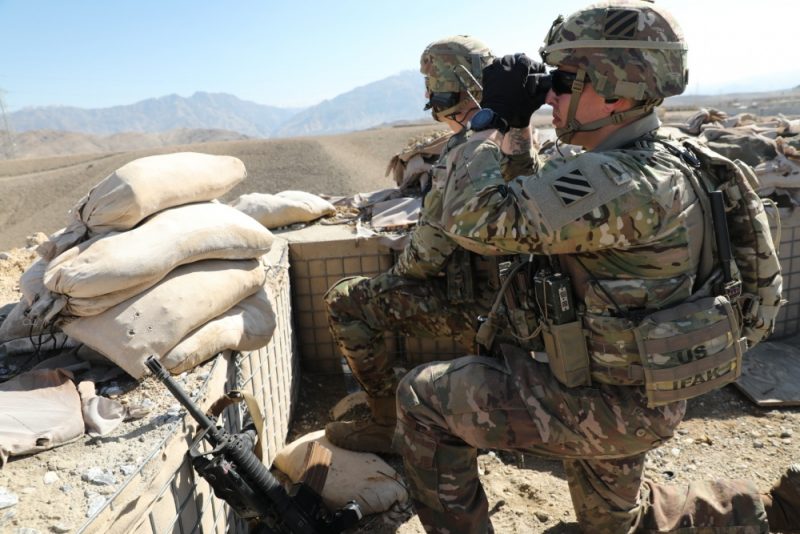
We live in the eternal now—a condition which makes it difficult to recall even what happened last week. So readers will be forgiven for not recalling the fine detail of a document published by the US Department of Defense 20 months ago. That document was the US national defence strategy (NDS).
Alongside a set of companion documents—the national security strategy, the nuclear posture review and the missile defence review—the NDS outlined the strategic core of the Trump administration’s thinking about defence policy. The full document was classified, but an 11-page unclassified synopsis was made available for public distribution. In the months since, US defence officials testifying before Congress (see, especially, here) have added colour and detail to the initial document.
The NDS made the case for an important strategic reorientation in US thinking. In broad terms, it asserted that ‘[i]nter-state strategic competition, not terrorism, is now the primary concern in US national security’. Moreover, it argued that America needed to shake free from an old model of warfare—a model generated in the days of US unipolarity when ‘Desert Storm’-style operations were waged against rogue states—to enable it to compete, deter and win against revisionist great powers.
True, the unclassified summary of the NDS promised that, ‘[c]oncurrently, the Department will sustain its efforts to deter and counter rogue regimes such as North Korea and Iran, defeat terrorist threats to the United States, and consolidate our gains in Iraq and Afghanistan while moving to a more resource-sustainable approach’.
Recent developments seem likely to provide a real-world test of just how many of those objectives the Pentagon can achieve simultaneously. President Donald Trump’s decision to cancel the talks with the Taliban scheduled to take place at Camp David brought to an end a simmering debate within the administration during the better part of July and August over the wisdom of negotiating a formal end to the US’s longest war.
Some analysts have argued that the decision reflects sound strategic judgement by Trump. And a case can be made that, at least in relation to Afghanistan, the pre-canvassed Zalmay Khalilzad agreement gave the Taliban too much in exchange for too little. But US public support for the mission is waning fast.
Current US troop levels—about 14,000—aren’t that high compared with a peak of almost 100,000 in 2011, and the current monthly cost is only about US$4 billion. For a great power, those are relatively acceptable costs. Still, the 14,000 troops need to be rotated, so the commitment’s not trivial. Figures recently released by the Pentagon show that over 775,000 US service members have been deployed to Afghanistan at least once in the past 18 years. An entire generation of US military personnel has come to understand war in terms of that conflict.
There’s a price to pay for that. As General Mark Milley, the US Army chief of staff, observed back in mid-2016, the American military has lost its muscle memory for great-power conflict. (It’s worth noting that Milley was recently confirmed by the US Senate as chairman of the Joint Chiefs of Staff, so we could reasonably expect his views to have a prominent role in shaping future policy.)
Holding on in Afghanistan makes it one notch harder to unpack the strategic reorientation called for by the NDS. Now, just as the Trump administration tries to balance its stated preference for prioritising great-power competition with the inertial drag of its commitment in Afghanistan, a new problem looms.
The weekend attack on Saudi Arabia’s oil facilities might be no more than an extremely lucky hit by a non-state actor. Alternatively, and perhaps more likely, it’s a forceful reminder that Iran remains a key rogue-state worry. So too North Korea, which is threatening to pull the plug on its dialogue with the US if Washington doesn’t bring more to the table.
What are Australia’s interests in all this? Well, we have 300 Australian Defence Force members and defence civilians in Afghanistan as part of the NATO-led stabilisation mission there. And, no, we wouldn’t want to see the country slide backwards after the sudden withdrawal of foreign forces. But if we look at the issue sensibly, both the threat of looming great-power competition and the geopolitical adventurism of Iran and North Korea would seem to constitute more serious challenges than global terrorism.
In short, Australia should be placing greater value on our major ally stepping up to the prospective higher-level conflicts: those which will have greater regional and global effects. The question, after all, is not merely what needs to be done. Lots of things need to be done, many of them simultaneously. The question’s actually one of risk: where can we tolerate a higher level of risk in the international security portfolio? Cast in that light, the answer’s easier to find. We can tolerate risk more readily in the terrorist threat, because terrorists don’t—usually—shift major-power balances, or change regional security orders.
So was the global war on terror always wrong? No. But it depended on unipolarity or, at worst, a world with a benign great-power balance. That world no longer exists.

